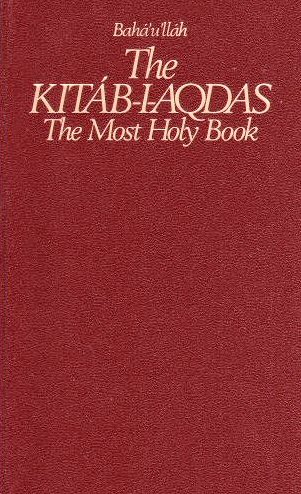| MOHAMMED REZA ISFAHANI, APRIL 2006 |
| |
The following article is the result of research in history to establish that as time passed by, the books of history of the Babis and the Bahais were altered to suit Bahai propaganda, to reduce the importance of the Bab and his successor Mirza Yahya Noori and to raise the position of Bahaullah.
The history of the Bab is outlined in the following books (in descending order of their being written):
E G Browne's fascination with the Babi Faith began with Count Gobineau's Reliqions ei Philosophies dans l'Asie Centrale (first published in 1865 in Paris). Subsequently, he traveled to Persia (now Iran) in 1887 to find out more about the Babi Faith. After a year he returned to Cambridge University where he wrote and published in the Journal of the Royal Asiatic Society two lengthy articles on The Babis of Persia (J,R.A.S., I889, pp. 485-526 and 881-1009). He also wrote the book, A Year Amongst the Persians (published in 1893). Thus began Browne's deep interest in the Babi movement, which continued to the end of his life, and which made him the outstanding authority on the movement among English scholars, if not among all western orientalists. Much of the history of this movement would have been irretrievably lost except for the painstaking and scholarly researches of Edward G. Browne.
When the Cambridge scholar arrived in Iran in 1887 he soon discovered that the situation was quite different from what he had thought it to be. As he says, "My researches among the Babis....revealed to me the fact that since Count Gobineau composed his work great changes had taken place in their organization and attitude. I had expected to find Mirza Yahya Subhe' Azal …… universally acknowledged by them as the Bab's successor and the sole head to whom they confessed allegiance. My surprise was great when I discovered that so far from this being the case, the majority of the Babis spoke only of Bahaullah as their chief and prophet; asserted that the Bah was merely his herald and forerunner...; and either entirely ignored or strangely disparaged Mirza Yahya. It took me some time fully to grasp this new and unexpected position of affairs..." These followers of Baha called themselves not Babis but Bahais.
(Ref: A Traveller's Narrative, Introduction pages XV, XVI)
When Browne returned to England in 1888 he took with him a Babi book in manuscript entitled Taarikhe' Jadid (The New History). This book, as he later discovered, was written in 1880 by Mirza Husayn of Hamadan with the assistance of several other Bahai scholars. In the New History there were numerous references to an earlier work by Mirza Jani from which Mirza Husayn had derived much of his material. But when Browne made inquiries in Iran as to Mirza Jani's history he was unable to find a copy or to obtain any information whatever regarding this hook. It seemed that it had entirely disappeared and been forgotten. So he set to work to translate the New History in preparation for publication. He was surprised and puzzled, however, by the failure of the book to give any account of Subh-i-Azal, who, according to Gobineau, was the universally recognized successor to the Bab, and on the other hand by the importance accorded to Baha, the half-brother of Subh-i-Azal. When he made inquiries of the Bahais they either professed total ignorance of Subh-i-Azal, or made derogatory remarks about him.
A fortunate discovery made by Professor Browne in 1892 threw light on the problem. In the Bibliotheque Nationale in Paris he found a copy of the lost history written by Mirza Jani, entitled the Nuqtatul Kaf!' This manuscript was one of the Babi books brought back from Iran by the Comte de Gobineau and sold at auction after his death. Browne eagerly compared this book with the New History, and discovered that while the New History embodied a great deal of what Mirza Jani had written in his history, a considerable amount of the material in the older history had been either changed or omitted by the authors of the New History. For example, while Mirza Jani gave a full account of the appointment of Subh-i-Azal by the Bab as his successor, and a detailed explanation of the exalted position which he occupied, one of equality with the Bab, the author of the New History omitted all this, and portrayed Baha as the greater person.
(Ref: The New History of the Bab, pages 374-382, Nuqtatul Kaf, Introduction in English, pages XXXVI, XXXVII)
Hence, when Browne published his translation of the New History in 1893, he included in it as an Appendix the most important passages of the Nuqtatul-Kaf which had been omitted or altered in the New History.
(Ref: The New History of the Bab, translated by E. G. Browne, Cambridge, 1893)
Why was this done?
"The earliest, fullest and most interesting history of the Bab and his immediate disciples....was almost completely suppressed," wrote Browne, "because it reflected the opinion which prevailed immediately after the Bab's martyrdom that his successor was Mirza Yahya Subh-i-Azal, and thus came into conflict with the Bahai contention which arose ten or fifteen year later, and a recension of it was prepared (known as 'the New History!) in which all references to Subh-i-Azal were eliminated or altered, and other features regarded as undesirable were suppressed or modified."
(Ref: The New History of the Bab, pages 327-396)
Mirza Jani was uniquely fitted to be the historian of the Babi movement. He was a merchant in the town of Kashan, and once entertained the Bab for two days in his home. He traveled extensively with Mirza Yahya Subh-i-Azal and his brother Mirza Husayn Ali Bahaullah. He knew intimately all the early Babi leaders. He was respected as a man of integrity, and he proved his devotion to the Babi Cause by dying for his faith in Teheran in 1852. In 1910 Browne published in full the Persian text of Mirza Jani's history, with most valuable introductions in both Persian and English.
The New History which was translated and published by Browne was never published by the Bahais. It was soon suppressed, and very few Persian copies are now in existence. In its place yet another history was prepared in 1886 by the Bahai leaders, entitled A Traveller's Narrative. The name of the author was not attached to the book, but it was later established that he was no other than Abbas Effendi, the eldest son of Bahaullah. Hence this may be considered an official Bahai history of the movement. A copy was given to Browne by the author when he visited Baha in Acre (Akka) in 1890, after having visited Subh-i-Azal in Cyprus. Of this book Browne writes: "The Traveller's Narrative....represents a further development of the tendency, to which I have already alluded, to glorify Bahaullah and his Neo-Babi doctrine at the expense of the Bab and the primitive Babi theology. In the New History it is still the Bab and his apostles, and the early martyrs of the cause, whose words and deeds form the subject matter of the work. In the Traveller's Narrative this is no longer the case; it is Bahaullah who is the hero....while the Bab has been reduced from his high station of 'Point'....to that of a mere precursor and harbinger of a more perfect dispensation."
(Ref: New History, Introduction. page XXXI)
The Persian text of this book, as well as the English translation with some 320 pages of Introduction and Notes, was published by Browne in 1891, and these volumes are indeed a mine of information. In his Introduction Browne calls attention to the following peculiarities of the Traveller's Narrative:
The secondary importance accorded to the Bab and his early followers. The sufferings of the first disciples are passed over lightly, and the deaths of the Seven Martyrs and the massacre of 1852 are largely unnoticed.
The belittling of Subh-i-Azal, who is depicted as a person of no consequence. "No opportunity is lost of disparaging bath his courage and his judgment."
Extraordinary temperateness toward the Shah of Iran, and deprecation of the opposition of the early Babis to the government of Iran.
(Ref: A Traveller's Narrative, Int. pp. XLV-XLVI)
We must now consider in somewhat further detail how Mirza Jani's history was treated by the compiler of the New History.
First he entirely suppressed the original Introduction and substituted one of his own of a much less metaphysical and more rationalistic character (pp. 1-30 of my translation of the New History).
Secondly, he entirely suppressed the original conclusion, dealing with the history of Subh-i-Azal and the events immediately succeeding the Bab's death, and substituted a quite different conclusion on his own.
Thirdly he suppressed all mention of Subh-i-Azal, whose name only occurs once in a sentence clearly interpolated in the British Museum manuscript. of the New History.
Fourthly he toned down or suppressed incidents and expressions not in accordance with later Bahai sentiment or calculated to create an unfavorable impression on the general reader. Bahaullah strove to make peace with the Persian Government by representing himself and his followers as loyal subjects of Nasiru'd-Din Shah, the arch persecutor of the Bab and his disciples; told his followers that they should prefer to be killed rather than to kill, that they should "consort with those of all creeds with spirituality and fragrance", and that all men "were fruits of one tree and leaves of one branch". The original Babis, on the other hand, were more like the old Covenanters: they might consider themselves as "meek", but they fully intended to inherit the earth; they held those who rejected the Bab as unclean and worthy of death; and they held the Qajar Shahs of Persia in detestation which they were at no pains to hide. Hence considerable modifications had to be made in Mirza Jani's phraseology in order to bring it into harmony with Bahai ideas as to what should have been the demeanor and phraseology of their predecessors.
(Ref: Nuqtatul Kaf, English Introduction)
Another example of how history is altered is when The New History omits certain passages of Nuqtatul Kaf, notably that in which the Bab asks his fellow-prisoners to kill him, and the account of the disposal of his remains by Subh-i-Azal.
(Ref: Nuqtatul Kaf, English Introduction)
Unfortunately, it is the Traveller's Narrative, in which the history and doctrines as recorded by the Bab in his extant writings and also by Mirza Jani and Gobineau have been radically revised to conform to the later Bahai pronouncements, that has been followed as authentic history by the authors of many of the more recent books and articles which have professed to tell the true story of the rise of the Bahai Faith. Thus, by neglecting intentionally or through ignorance the primary sources, they have to a considerable extent misrepresented the true history of the movement. As Browne wrote in 1910, ".... the more the Bahai doctrine spreads, especially outside of Persia, and most of all in Europe and America, the more the true history of the original Babi Movement is obscured and distorted."
(Ref: Nuqtatul Kaf, English Introduction, page XXXV)
The Bahais must answer why this was done. For an objective student of history, the answer is obvious.
I cannot but help raise a point - within a period of 200 years, the history of the Bab was altered - by the Bahais. Yet they expect that each and every tradition and date in Islam be cent-per-cent accurate. They must first look within themselves first and solve the questions raised by E G Browne.
Also Read: Censorship: Alteration of Bahai books
The Bab - Life and Times
blog comments powered by Disqus
![]() |
|  GET RSS
GET RSS
 A FREE ONLINE MAGAZINE ON THE EVENTS IN THE WORLD OF BAHAIS A FREE ONLINE MAGAZINE ON THE EVENTS IN THE WORLD OF BAHAISCLICK TO SUBSCRIBE |

